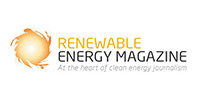
There are five trends emerging when looking at the residential solar and renewable market: soaring storage demand and resiliency, green policy shifts, software and hardware advancements, positive economics and investor fervor. Here’s why each is important:
- Soaring Storage and Resiliency Demand
With Tesla home storage backlogged and Enphase almost sold out on Q3 storage plus projections of 10% attachment in Q4 (compared to 0% in Q2), the homeowner conversation has shifted from solar to a solar + storage (resiliency-based) solution. Homeowners want to know they are safe at home during wildfires, power outages or even just COVID-19 lockdowns. With falling storage prices and the storage software systems providing cost-saving services, homeowners can save substantial amounts of money with these bundled solutions whereas they couldn’t in the past. Homes no longer need to be tied to electrical grids to have energy security. - Green Policy Shifts
With the potential of a new COVID-19 spending package, and after coal and oil have received some support, policymakers are considering providing further incentives for solar and storage. If Joe Biden is elected President and continues his focus on clean energy, the landscape for policy could shift to further support renewables and further turn the United States into an epicenter of rapid renewable energy deployment and green job growth. - Software and Hardware Evolution
With the evolution of software that allows for homes to strategically put power onto the electrical grid at the exact right time, additional economic models are emerging. Today’s software-enabled battery systems can peak-load shave and provide time-of-use cost reductions. Solar + storage software-enabled homes are capable of producing and storing power without the grid during power outages or just as an additional savings opportunity when utility rates are the highest. Homeowners are getting the luxury of what was previously unaffordable to many while also saving money. The same software is connecting the home and all appliances. In turn, this is driving the evolution of, and entry point to, the smart home.












